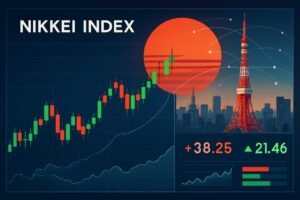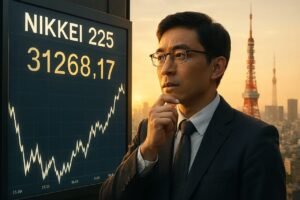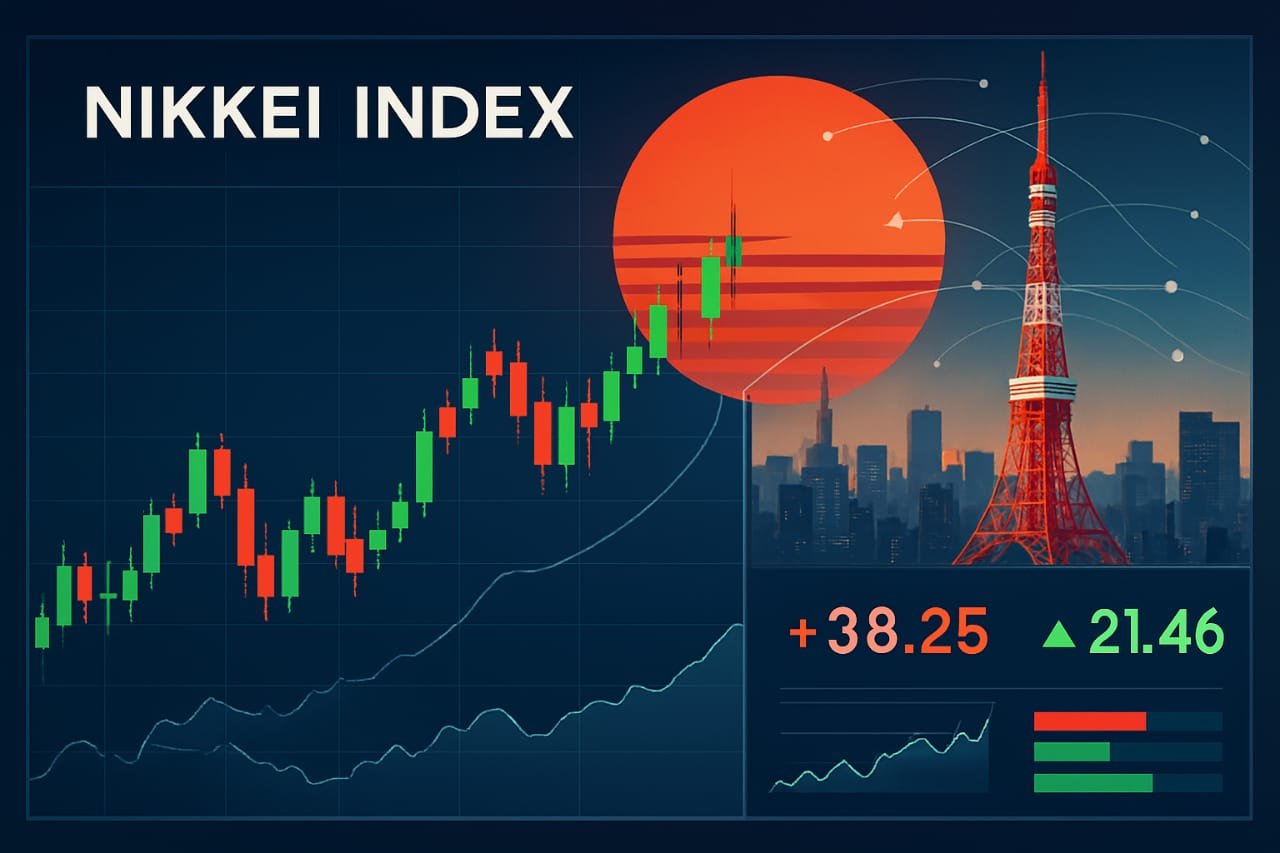Nikkei Index: Deep Dive into Japan’s Market Benchmark & Global Significance
When people think of global stock markets, Wall Street often dominates the conversation. But there’s another major player on the international stage—the Nikkei Index. As Japan’s premier stock market benchmark, the Nikkei offers critical insights into Asia’s second-largest economy and reflects broader global economic trends. But what exactly is the Nikkei Index, and why should investors—whether in Tokyo, New York, or Mumbai—care?

Let’s explore the Nikkei Index in depth, break down its structure, compare it to other global indices, and extract actionable insights for investors looking to diversify and strengthen their portfolios.
What Is the Nikkei Index?
The Nikkei 225, commonly referred to as the Nikkei Index, is Japan’s most well-known stock market index. Launched in 1950 and calculated by Nihon Keizai Shimbun (The Nikkei), it tracks the performance of 225 leading companies listed on the Tokyo Stock Exchange (TSE).
Unlike many Western indices that are market-cap-weighted (like the S&P 500), the Nikkei is price-weighted, much like the Dow Jones Industrial Average (DJIA). This means companies with higher stock prices exert a greater influence on the index’s movement, regardless of their market size.
✅ Learn more about the official Nikkei Index data and updates here on the Nikkei’s official index site.
Key Features of the Nikkei Index:
-
Index Type: Price-weighted
-
Constituents: 225 Japanese blue-chip companies
-
Exchange: Tokyo Stock Exchange (TSE)
-
Sector Representation: Technology, automotive, financials, pharmaceuticals, and consumer goods
-
Update Frequency: Every 15 seconds during TSE trading hours
Nikkei Index vs Global Indices: A Comparative Lens
Understanding the Nikkei’s global relevance requires comparing it to other major indices. Here’s a quick look:
| Index | Country | Weighting | No. of Constituents | Key Sectors |
|---|---|---|---|---|
| Nikkei 225 | Japan | Price-weighted | 225 | Technology, Automotive |
| S&P 500 | USA | Market-cap weighted | 500 | Tech, Finance, Health |
| Dow Jones (DJIA) | USA | Price-weighted | 30 | Industrial, Financial |
| FTSE 100 | UK | Market-cap weighted | 100 | Energy, Financials |
| DAX | Germany | Market-cap weighted | 40 | Industrial, Auto |
Key Differences:
-
The Nikkei Index, like the DJIA, is price-weighted, which means large price swings in a single company (like Fast Retailing or SoftBank) can distort the broader picture.
-
It represents the top-performing Japanese companies, but not necessarily the largest by market capitalization.
-
Unlike the S&P 500, which reflects a broader economic sentiment across the U.S., the Nikkei is more export-heavy and sensitive to global trade dynamics, especially with the U.S. and China.
What Drives the Nikkei Index?
1. Yen’s Exchange Rate
Since Japan is an export-heavy economy, the value of the yen directly affects the competitiveness of its companies. A weaker yen boosts exports, often pushing the Nikkei up, while a stronger yen can drag it down.
Example: When the yen weakened significantly in 2022, companies like Toyota, Sony, and Panasonic saw sharp stock price increases, lifting the entire index.
2. Global Trade Conditions
Given Japan’s reliance on global supply chains, changes in trade agreements or tariffs—especially involving the U.S., China, and EU—can quickly reflect in the Nikkei’s performance.
3. Bank of Japan’s Monetary Policy
The Bank of Japan (BoJ) has played a major role in supporting the economy through aggressive quantitative easing, sometimes even directly purchasing ETFs. This liquidity boost tends to have a strong influence on stock performance.
4. Technological Innovation
Companies like Tokyo Electron, SoftBank, and Sony are global tech giants. Rapid innovation or global tech sector rallies often pull the Nikkei upward.
Personal Experience: My Eye-Opening Moment with the Nikkei
As a retail investor primarily focused on U.S. stocks, I once overlooked Asian markets entirely—until a market correction in 2022 wiped out some of my S&P 500 gains. Looking to hedge my risk, I diversified into international ETFs, including one tracking the Nikkei 225.

To my surprise, while Western tech stocks floundered, Japan’s more industrial and consumer-oriented firms proved resilient. That experience taught me that the Nikkei isn’t just an indicator of Japan’s economy—it’s a valuable counterweight in a diversified portfolio.
Investing in the Nikkei Index: How Can You Access It?
You don’t need to live in Japan or open a Japanese brokerage account to invest in the Nikkei. Here are some globally accessible options:
✔️ ETFs:
-
iShares MSCI Japan ETF (EWJ) – U.S.-listed, includes top Japanese firms.
-
MAXIS Nikkei 225 ETF (1346.T) – Japan-based, but available via international brokers.
-
Nomura Nikkei 225 ETF – Popular within Asia.
✔️ Futures Contracts:
Traded on platforms like CME or SGX, Nikkei futures are ideal for more advanced investors.
✔️ ADRs (American Depositary Receipts):
Major Japanese companies like Toyota (TM), Sony (SONY), and SoftBank have ADRs listed on U.S. exchanges.
Recent Trends: Nikkei Index in 2025
As of August 2025, the Nikkei Index is nearing a 34-year high, finally surpassing levels seen during the late 1980s economic bubble. This milestone comes on the back of:
-
Strong tech sector earnings
-
A resilient yen amid global currency volatility
-
Increased foreign investment in Japan’s stock market
Bloomberg recently reported that foreign investors poured over ¥3 trillion into Japanese equities in Q2 2025—a clear sign of renewed global confidence.
Why Should Global Investors Watch the Nikkei Index?
🌏 Global Economic Barometer
The Nikkei offers valuable insight into Asia-Pacific economic health, particularly as Japan is a manufacturing powerhouse in semiconductors, automobiles, and consumer electronics.
💼 Diversification
Investing beyond your home market reduces exposure to regional risks. The Nikkei often behaves differently from U.S. and European indices, making it an excellent hedging tool.
🚀 Exposure to Global Giants
You’re not just investing in Japan—you’re gaining exposure to multinational corporations like:
-
Toyota
-
Sony
-
Keyence
-
SoftBank
-
Nintendo
Challenges & Criticisms of the Nikkei Index
Despite its influence, the Nikkei isn’t perfect. Here are a few criticisms to be aware of:
-
Price-weighted flaws: A company with a high stock price (not market cap) can skew the index.
-
Lack of sector balance: Technology and manufacturing dominate; sectors like healthcare and finance are underweighted.
-
Not reflective of Japan’s full economy: The Nikkei includes only large-cap, blue-chip companies—leaving out SMEs and startups.
However, these flaws are often addressed by complementary indices like the TOPIX (Tokyo Stock Price Index), which is market-cap-weighted and broader.
Final Thoughts: The Future of the Nikkei Index
With Japan embracing digital transformation, clean energy, and semiconductor leadership, the Nikkei 225 is poised for long-term growth. Its recent surge in 2025 is more than just a technical milestone—it’s a signal of renewed investor faith in Japan’s economic future.

Whether you’re a seasoned investor or just building your first international portfolio, understanding and tracking the Nikkei Index can provide powerful insights and opportunities.
📣 What’s Your Take?
Are you already investing in Japanese stocks or ETFs? Have you tracked the Nikkei Index before? Share your thoughts in the comments below or check out our Top Global Indices Comparison for more insights.
📩 Want more content like this? Subscribe to our newsletter to get weekly updates on international markets, smart investment strategies, and financial tools you can trust.
